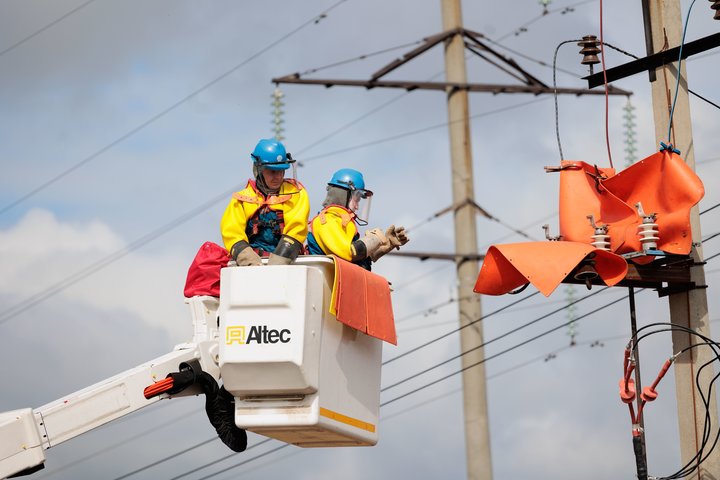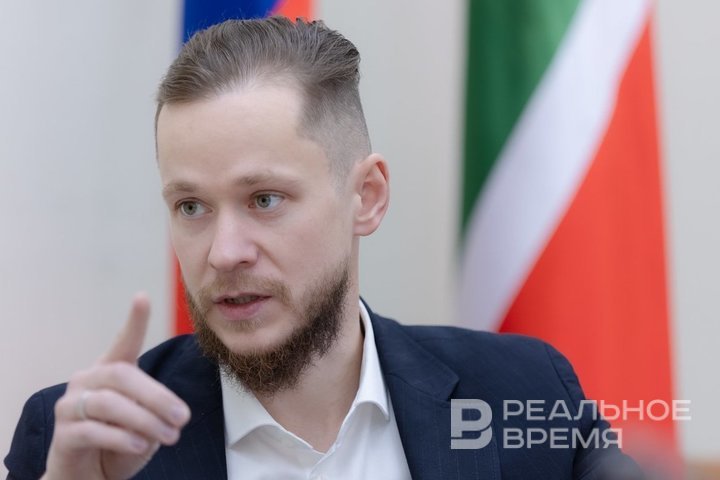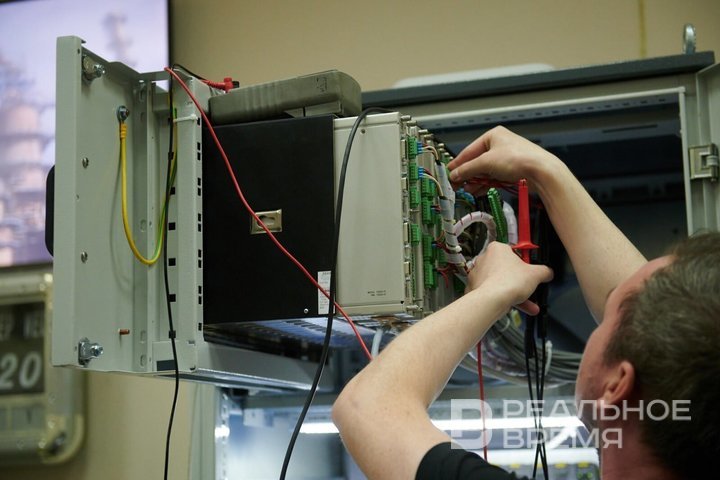Up to 1,000 kWh a month: Tatarstan to switch to differentiated tariffs
The “social tariff” for electricity will be in effect if the monthly consumption does not exceed 1,000 kWh

Tatarstan will be one of the last regions in Russia to switch to differentiated tariffs for electricity. The “preferential” range of energy consumption where “social” tariffs will apply, is supposed to be limited to 1,000 kWh a month. This is almost four times lower than the current federal gradation of 3,900 kWh a month, set for 2025. The sharp decrease in the preferential energy consumption level is related to the position of the Federal Anti-Monopoly Service (FAS), the anti-monopoly authorities decided to revise the inflated ranges due to the low rate of reduction of the “cross-subsidies” in the country. The Tatarstan regulator will present the future “scale” of differential tariffs for public discussion in late May — early June, but for now the volume of cross-subsidization in Tatarstan is estimated at 6 billion rubles.
New tariffs for electricity from 2026
Starting next year, differentiated tariffs for electricity will come into effect in Tatarstan, residents will pay for the resource depending on the volume of consumption, and not at a fixed rate for all burnt kilowatts. The reform of social tariffs for electricity used by citizens in households is currently being prepared by the State Tariff Committee of the Republic of Tatarstan. The corresponding order was given by the government of the republic in pursuance of federal legislation. Information about this was confirmed to Realnoe Vremya by the deputy chairman of the Tatarstan tariff department Sergey Pavlov.
“As you know, starting next year, Russian regions must introduce differential tariffs, and Tatarstan will not be an exception. We are currently conducting calculations to determine the economically justified cost of 1 kWh,” he told Realnoe Vremya.
According to him, the republic delayed the transition to a new system of payment for electricity consumption for household needs until the last minute, but the deadline, as they say, is “just around the corner.”

By this time, 76 regions of the country have established differential tariffs on their territory, and in six regions, a social norm is in effect, according to which the price of electricity depends on the volume of its consumption. Tatarstan remained one of nine regions where tariffs for 2025 were formed in the old way, based on the calculation of the maximum permissible fee for housing and communal services (i.e. they were kept within the established index of fee growth for Tatarstan — 9%).
The introduction of differentiated tariffs implies abandoning the principle of calculating the “index of citizens' fees” (editor's note: used as a limiter on the growth of the tariff burden for housing and communal services for the population). Now the fee for electricity will depend only on the volume of consumption, and may not be taken into account when calculating the index. The principle is simple: the more you spend, the more you pay. This is the essence of the reform. The protective buffer, used since the early 2000s, may stop working, but instead, residents will be given the opportunity to use social tariffs, but only within the preferential range of energy consumption. In the range of up to 1,000 kWh a month
Tatarstan will rely on the federal gradation when determining the scale of energy consumption ranges, Sergey Pavlov clarified in a conversation with Realnoe Vremya. The first provides a preferential tariff, the second — a commercial tariff with a plus of 50-60% to the social one, and the third — a tariff at the wholesale market price. However, the Tatarstan regulator can change the “norm” of preferential energy consumption in the first range. Its volume will be limited to 1,000 kWh. This is almost four times lower than in the current gradation of the first range of 3,900 kWh per month, established for 2025 on the recommendation of Russia’s FAS in almost all regions of the country.
“A month ago, the FAS management announced that the upper limit of the range would be reduced from 3,900 to 1,000 kWh. The tightening of the federal regulator's position is due to the fact that the reform to reduce the “crossroad” does not achieve its goal. Regions with the maximum limits of the preferential range are now in the zone of criticism,” the source of the newspaper said.
In the event of a sharp reduction in the bar, fewer consumers will be able to use the “social” tariff.

The Tatarstan regulator will present the future scale of differentiated tariffs at a public discussion closer to the beginning of summer. “So far, the document is being coordinated with FAS of Russia. At the end of May — beginning of June, we plan to hold a board meeting of the State Corporation on tariffs, dedicated to the introduction of differential tariffs in Tatarstan,” said Sergey Pavlov.
In Tatarstan, the “crossroad” is within 6 billion rubles
The mechanism for differentiating tariffs for the population was developed by FAS of Russia two years ago. And the common ranges of electricity consumption for all regions for tariff differentiation were approved on 1 November 2024. According to the decree of the Government of the Russian Federation, this year the social tariff (varies from region to region) was in effect in the first range with a consumption volume of up to 3,900 kWh per month. The economically justified tariff (also differs) is in effect in the second range — up to 6,000 kWh. And in the third range there are no energy consumption limits, since the consumer will have to pay at the wholesale market price.
The goal of the reform is to reduce the volume of cross-financing in the electric power industry, when the industry subsidizes reduced (social) tariffs for the population. The authorities want to cut off unscrupulous businesses and illegal cryptocurrency miners from preferential energy consumption, who use low tariffs under the guise of citizens. However, during the first year of the mass transition to differential tariffs, the volume of cross-subsidization did not decrease, but increased. The volume of the “crossroads” in 2025 increased to 340 billion rubles, the share of Tatarstan is 2%. The reason for the inflation is that the preferential range turned out to be too wide at 3,900 kWh. Earlier, the Ministry of Energy of the Russian Federation proposed to set it within 1,100 kWh, apparently, now the regions will return to this figure.
Tatarstan “missed” the introduction of differential tariffs in 2025. At the end of the tariff campaign, the regulator notified that the republic did not introduce the innovation. “The Republic of Tatarstan remains one of nine regions of Russia that have not introduced differentiation of electricity tariffs for the population depending on consumption volumes. Tariff indexation for 2025 took place in the previous format,” the State Tariff Committee said in a statement.
How to find the notorious balance of interests
Director of the Institute of Economics and Regulation of Infrastructure Industries of the National Research University Higher School of Economics, member of the public council at FAS Ilya Dolmatov believes that it is necessary to find a balance of interests between industry and consumers in the conditions of a changing economy.
“If earlier, when setting tariffs, they proceeded from the principle of ‘inflation minus,’ then recently there has been a ‘manual adjustment’ of tariff regulation to ensure and sufficiently finance infrastructure in crisis conditions. On the one hand, residents complain about high tariffs, and on the other hand, there is a lack of investment in infrastructure. But growth of more than IPG can be compensated by non-tariff sources, including budget financing,” he believes.
Currently, the share of energy costs in industry is within 3%, according to calculations by experts from the Institute of Economics and Regulation of Infrastructure Industries of the National Research University Higher School of Economics.
“Energy costs in industry have not increased since 2006. And there is even a steady downward trend from 3.83 to 2.5%. The tariff burden on business is not increasing, which is encouraging,” the expert states.
On the other hand, industrial enterprises in Russia have to compete with Asian manufacturers. But here, too, the current energy price environment is favourable. Thus, the cost of 1 kW h in China and Russia is almost equal and varies within 8.7-9.2 cents per 1 kW h, in Belarus — 9.9 cents per 1 kW h, in Turkey — 13.3 cents per 1 kW h. Therefore, experts believe that all regulatory measures should be considered. “Here we should develop a balanced approach to forming the tariff burden for industry and the population, and for this we need to have tools for objective measurement. In my opinion, the approaches to measuring the tariff burden for industry and the population should be different,” says Ilya Dolmatov.